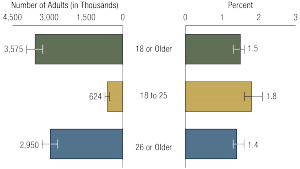ARTICLE OVERVIEW: A 30-day residential program can cost around $10,000, while a long-term stay in residential treatment, can be cost twice that much. Costs vary based on services and total time spent in treatment. More here.
TABLE OF CONTENTS:
- The Debate
- What Residential Treatment is Like
- A Day In A Residential Rehab
- Who Needs Treatment
- Average Cost
- Factors That Influence The Final Cost
- No Cost Residential Treatment
- Low Cost Residential Rehabs
- Is It For Me?
- What Is The Best Residential Program?
The Debate
Residential treatments and medical detox have been accused of costing an arm and a leg. Further, proponetns of outpatient programs note that addiction relapse rates are similar to those of other chronic diseases. Does this means that going to rehab is throwing your money down the drain?
NO.
Addiction is a chronic, relapsing disease. In addition, residential treatment programs can be very effective at addressing alcohol and drug addictions. Those who can benefit most include:
- People who have tried to treat addiction on their own, but failed.
- People who do not have support at home.
- People who can benefit from a new, supportive environment.
- People with long-term, high dose drug problems.
Moreover, NIDA research has shown that most people who get treatment and complete a rehab program stop using substances, decrease their criminal activity, and improve their overall social functioning. Unfortunately, almost half of addicts that needed treatment may not seek it because they believe they can’t afford it. Read more about the cost of treatment programs and your options here. Then, we invite your questions at the end.
What Residential Treatment is Like
Residential rehab, also known as an inpatient rehab, is treatment that requires patients to live at the facility for a period of 30-60-90+ days. Patients typically come for detox and treatment, and live at the facility until the end of the program. These programs offer many services including:
- Medical detox.
- Psychological treatment.
- Counseling.
- Aftercare referral.
Moreover, residential programs provide a supervised and healthy environment where patients focus on their recovery without pressures of the outside world.
There are two types of residential treatments:
- Long-term residential programs offer a highly structured program that lasts between 6 and 12 months in a non-hospital setting.
- Short-term residential programs offer 3 to 6 weeks hospital-based program usually followed by extended outpatient therapy.
A Day In A Residential Rehab
What does a typical day in rehab look like?
Attending therapy is not the only activity on the agenda. Many programs provide time for daily exercise, social activity, and even self-expression. Sometimes, shopping trips and therapeutic appointments are offered. As you progress in your treatment plan, special events such as visiting local support groups (AA and NA Meetings) may also be built into the schedule. Relaxation and recreation are crucial parts of any recovery program that is focused on holistic healing…so be sure that the rehab you choose has a good balance of “work” and “rest”.
Below is an example of a typical day in a residential program:
7:00 AM – 8: 00 AM Wake-up, breakfast, and chores
8:00 AM – 9:00 AM Morning medication and nurse checks
9:00 AM – 9:30 AM Time for daily activities
9:45 AM – 10:00 AM Break
10:00 AM – 11:00 AM Group therapy session
11:00 AM – 11:45 AM Journaling time
11:45 AM – 12:00 PM Clean up, and prepare for lunch
12:00 PM – 1:00 PM Lunch
1:00 PM – 2:00 PM Individual counseling therapy
2:00 PM – 3:00 PM Group exercise and/or outdoor time
3:00 PM – 4:00 PM Afternoon medication and nurse checks
4:00 PM – 4:30 PM Drug screening
4:30 PM – 5:30 PM Medication management meeting
5:30 – 6:30 PM Major daily chores
6:30 PM – 7:30 PM Family therapy
7:30 PM – 8:30 PM Second group therapy session
8:30 PM – 9:00 PM Social time, phone calls, etc
9:15 PM – 9:30 PM Nightly medication and nurse checks
10:00 PM – 11:00 PM Quiet time, reading, homework, or journaling
11 PM – Lights out
Keep in mind that this schedule can be changed by off-site meetings, special events, and recreational trips. Furthermore, the reason rehab advocate for a regular routine is three fold. Drug or alcohol use usually pull us out of a regular sleeping pattern, which is critical to our overall health. Eating, sleeping, and resting at regualr intervals help us:
- Gain hormonal balance.
- Reset circadian rhythms.
- Orient our brains to work-rest patterns essential to life without drugs.
Who Needs Treatment
The National Survey on Drug Use and Health reported that an estimated number of 19.0 million adults needed addiction treatment in 2016. This is about 8.1% of the adult population…
But how many are getting treatment?
Only one in five people who need addiction treatment received treatment in the past year!
In fact, SAMHSA’s report found that, in 2016, about 3.6 million people aged 18 or older received any substance use treatment in the past year. The numbers break down in two age categories:
- 624,000 young adults aged 18 to 25.
- 3.0 million adults aged 26 or older.
Moreover, the same report found that only 2.1 million adults aged 18 or older received substance use treatment at a specialty facility in the past year. “Specialty treatment” refers to substance use treatment at a hospital (as an inpatient), a drug/alcohol rehab (as an inpatient or outpatient), or a mental health center.
Experts agree: People need treatment for addiction but are not getting it!
Average Cost
The average cost of residential treatment programs that are under 30 days have been estimated to be around $10,000. However, some studies set the average cost for a 28 residential rehab program as high as $19,000.
Long-term residential treatment, can be cost twice that much, averaging $21,404. In 2013, the Betty Ford Center, one of the nation’s most well-known treatment facilities, cost between $29,500 to $39,500 for a 60 to 90 day treatment program.
Factors That Influence The Final Cost
In order to estimate the cost of residential treatment programs, you must look at a few very important factors. By considering these, you may be able to get a general idea of what type of treatment program you can afford.
1. Duration of residential treatment.
First of all, the length of time that you spend at a residential treatment program will have a great impact on the cost of the program. It probably won’t come as much of a surprise to discover that the less time you spend in a residential program, the lower the cost. This means that short-term residential programs of 30 days or less are usually more affordable than a 3-6 months stay in a residential treatment program.
2. Types of therapies you receive.
The services that a particular facility offers and the services that you need during treatment will also have an impact on the overall cost. Detoxification at the beginning of treatment may be crucial for the success of the addiction treatment, but medical detox could cost as much as a treatment for a mental disorder could. Additionally, luxury or spa treatments can add to the cost of the final prive tag.
3. Type of treatment program you choose.
The type of facility that you choose could also have an impact on how much you’ll pay. Some studies have shown that smaller facilities are usually more expensive facilities than larger facilities. Private facilities are also more expensive than those run by non-profit organizations, more often than not.
Low Cost Residential Rehabs
There are a few ways to identify low cost residential treatment programs.
1. Check your medical health insurance coverage.
If you have health insurance, you should also contact your health insurance provider. Some companies will pay for part of your treatment, reducing the out-of-pocket costs for you. Thanks to the Affordable Care Act, you can also apply for federal healthcare insurance. Additionally, CNN recently reported that a new law will open up Medicaid for addiction reiumbursement for opioid and cocaine addiction treatment.
2. Look for sliding scale residential treatment programs.
Despite what you may think, low cost residential treatment programs aren’t a myth, nor are they impossible to find. In fact, many residential treatment facilities base their costs on sliding scale fees. These fees are usually based on your income and ability to pay. Find a treatment program that you like, and ask to speak with adminissions staff to negotiate payment based on your employment.
3. Seek assistance from government programs.
Finally, you may also be able to receive some assistance from your local or state government via Your State’s Department of Health and Social Services. To see if your area offers free or low cost residential treatment programs, contact your local government assistance office or search on the Substance Abuse and Mental Health Services Administration (SAMHSA) website.
No Cost Residential Treatment
Is free treatment available?
Possibly. Some no-fee programs are also available to many individuals. However, these are usually much harder to find. To find no cost residential treatment programs, your best bet may be to contact local non-profit organizations, such as the United Way or the Salvation Army. No cost residential treatment programs can also be found through the SAMHSA website. Simply search for treatment programs in your area, and narrow your search to those that offer payment assistance.
Is It For Me?
Residential rehab helps people who struggle with substance use disorder to break the chains of addiction, and turn their life around. If you are questioning whether you have a problem, start looking for signs. First, get honest with your self and answer these questions:
- Do you feel alcohol/drug cravings?
- Do you hide your substance use?
- Do you have any financial, legal, or family problems due to your substance use?
- Do you usually find excuses to drink or use substances?
- Have you failed in quitting?
- Do you continue to use no matter the consequences?
Still not sure? Take a look into:
- NIDA drug screening tool
- Diagnostic and Statistical Manual of Mental Disorders (DSM–5)
- Consult with an addiction specialist
What Is The Best Residential Program?
An effective residential program uses evidence-based approaches. The best ones are those that create unique programs in accordance with the patient’s needs. How can you know if you’ve selected “the best” program, or not? Give us a call on the number listed above. Our addiction recovery specialists can talk you through the process.
Then, the only thing you need to do is to trust the process. Treatment programs can help you learn to live without drugs or alcohol. There are the best option to start over, and learn how to live drug-free today…and in the future.
Your Questions Are Welcomed!
If you’re in need of addiction treatment, there’s no better time than now to seek help.
So, reach out.
We’re happy to hear from all our readers in the comments section below. Plus, if you need more info regarding the cost of addiction treatment in general, or you have any other concerns or questions, don’t hesitate to leave a comment below. We try to respond to all questions personally and promptly.










Related Posts